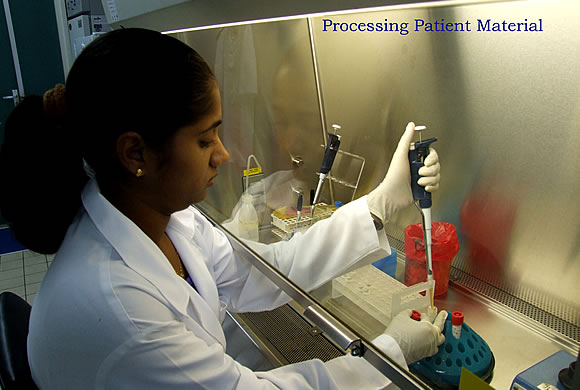Since April 2009, in nearly 200 countries including Suriname, casualties of the Influenza A H1N1 pandemic were noted. During the first outbreak in June, it was not possible to demonstrate the virus in Suriname; patient material was sent to the Netherlands and Trinidad for diagnosis.
In September 2009 at the request of the Ministry of Health, the Medical Scientific Institute started setting up diagnostics for the influenza virus, in which genetic material (RNA) of the virus was detected by using the Real Time PCR technology. Beside Influenza B, Influenza A, Influenza A H1N1 (seasonal and pandemic) and Influenza A H3N2, this test system can also detect the infamous H5N1 avian influenza virus. The shorter waiting time for the results improves the national surveillance, allowing an effective and coordinated approach to new outbreaks.
As of February 5 2010, all samples collected in the context of the national surveillance in Suriname are sent to the laboratory of the Biochemistry department for diagnosis and subtyping. To ensure the quality of its Influenza tests, the laboratory joined the External Quality Assessment Program (EQAP) of the Global Influenza Program of the WHO and has consistently achieved a test score of 100%.
Newspaper article:
MWI introduceert Influenza A H1N1-test in Suriname
Publication:
Trends of influenza infection in Suriname
Influenza and Other Respiratory Viruses 7(5), 629–633 (2013)
